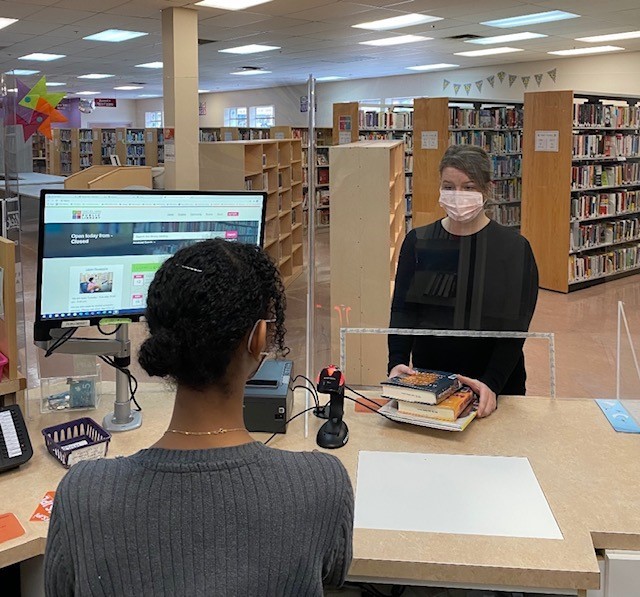Libraries have always been leaders in providing accessible services and adjusting to new trends. Libraries continually develop and evaluate their service models in order to provide the most relevant, authoritative and timely information to their patrons. At the Fort St. John Public Library (FSJPL), we’ve adjusted to many changes brought on by COVID-19. One of these changes is that we’ve intentionally slowed down our service. Surprisingly, slowing down can be a genuine time-saving technique for patrons and staff.

Specifically, we’ve slowed down the rate of speech, which has had one of the most notable impacts on improved communication. When we slow our speech, we can articulate more clearly and focus on the intonation and volume. We allow the listener time to process what we are saying. Library staff share that when they model intentionally slower speech, patrons also slow their speech in response.
The new safety protocols introduced because of COVID-19 create physical obstructions, such as face coverings and talking between plexi-glass, which make it hard to determine the subtleties of speech. The volume, intonation, articulation and pronunciation of speech are muddled. Reading lips becomes impossible. Patrons and staff can quickly get confused trying to hear and understand each other because of these barriers, especially if they are speaking too quickly. One of the easiest ways to remedy this is to slow down your speaking pace. When we slow down the rate of speech, increase the length of pauses between new sentences and check for understanding, we can enhance communication and our ability to respond effectively.
At the FSJPL, we have both staff and patron diversity, all of which bring with them individual accents, levels of language mastery, and speech or hearing impairments. One member of our staff has an auditory processing disorder, and in creating strategies to help them, it increased our awareness of how we can further help our patrons.
Librarians have been using reference interview techniques for decades to check for understanding. Librarians patiently assess what each patron is trying to communicate and have extensive training on effective communication. At the FSJPL we’ve implemented thoughtful communication techniques given the new circumstances.
One:
We repeat what patrons are saying before we proceed.
Library Staff: “I need to confirm I heard you correctly. Are you looking for information on the U.S. riots?”
Patron, “No, I said the Keto Diet.”
Library Staff: “Ok, the Keto Diet. I can help you find information on the Keto Diet.”
Two:
We articulate our words clearly and speak slowly on the phone. We use longer pauses between sentences and we shortened our greeting.
We say,
“Hello…Fort St. John Public Library….How can I help you?”
Rather than:
“Good morning Fort St. John Public Library, Jaiden speaking, how can I help you?”
Three:
We write down information as it is relayed and/or have patrons write things down to confirm. This is also a technique that library staff uses to protect privacy when dealing with personal information.
We think about our word choices and use formal wording.
We say,
“You’re welcome,” “Yes,” ”No”
Rather than,
“No worries,” “No problem,” “Yup” or “Uh-Uh”
Libraries continue to provide services that respond to changes in the community and their needs. As we adjust to changes in our spaces and safety protocols, a new model of service is emerging that can accommodate these changes and individual diversities to maximize communication.
Karlene Duncan is Director of Library Services at Fort St. John Public Library

